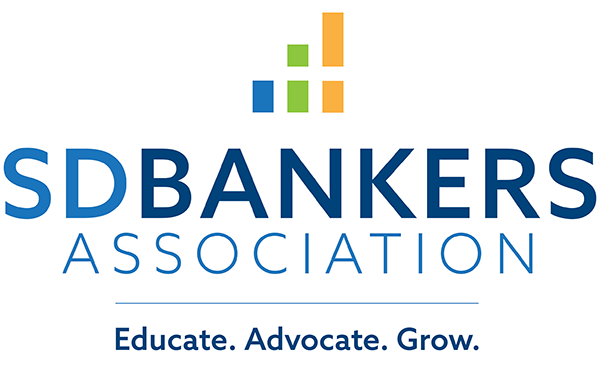Agencies Finalize Risk Retention Rule Aligning QRM with QM
Federal regulators on Tuesday finalized the Dodd-Frank Act’s mortgage risk retention rule, aligning the qualified residential mortgage, or QRM, standard with the Consumer Financial Protection Bureau’s Qualified Mortgage rule. The original QRM proposal would have included a more restrictive down payment requirement, but aggressive advocacy by ABA and others -- with comments from more than 10,000 institutions or individuals -- persuaded the regulators to re-propose the rule last year.
The agencies said that QM loans satisfy the low default risk required of QRMs by the Dodd-Frank Act. A QM has no down payment requirement and caps the debt-to-income ratio at 43 percent, with some exceptions. Instead, lenders and investors will maintain underwriting criteria that will likely address down payments and other prudential standards. The final rule applies 5 percent risk retention requirements only for non-QM mortgages. All mortgages that qualify for sale to Fannie Mae and Freddie Mac will be exempt from risk retention as long as the GSEs are under federal conservatorship.
The final rule allows any combination of vertical and horizontal integration of first-loss interests among market participants that adds up to 5 percent risk retention. The agencies made several small changes to the final rule by removing cash flow restrictions on horizontal residual interest, not requiring fair value calculations of eligible vertical interest and adjusting risk retention options for specific asset classes.
The rule takes effect one year after publication in the Federal Register. Read the final rule. For more information, contact ABA’s Joe Pigg.
ABA Applauds Changes to CFPB Points and Fees Cure Provision
The Consumer Financial Protection Bureau on Wednesday finalized a limited “cure” provision for the Qualified Mortgage rule, allowing a lender that intends to originate a QM but that later finds that points and fees exceeded the 3 percent cap to refund the excess, plus interest, within 210 days and maintain the legal protections afforded to QMs.
The bureau made several ABA-advocated changes to the final rule. It increased the cure period by 90 days and eliminated the “good faith” requirement, which ABA said injected a subjective element that negates a cure provision’s legal protections. However, the bureau limited creditors’ ability to cure after legal action, a 60-day delinquency or when a borrower identifies a points and fees miscalculation.
The cure provision takes effect upon publication in the Federal Register and will last until Jan. 10, 2021, at which point “creditors should become less reliant on points and fees buffers,” the CFPB said. Other changes finalized apply to Section 501(c)(3) nonprofits that originate and service mortgages. Read the final rule. For more information, contact ABA’s Rod Alba.
Clearing House to Develop Real-Time Payments System
The Clearing House, a bank-owned association that operates the largest private ACH network in the United States, announced yesterday that it and its member banks will, over the next several years, develop a real-time payments system to meet customers’ expectations. The newer platform is intended to replace the fast but not real-time technologies on which today’s clearing system is based.
Features of this system will include direct person-to-person payments, immediate notification of funds availability and transfer, lower costs than other payment options and greater control over cash flow for cash-constrained customers, the Clearing House said. To enhance security and privacy, payments will be routed with one-time “tokens” so that account information is not compromised.
“The digital economy moves in real time and our customers expect us to keep pace,” said Clearing House Chairman Richard Davis, who is chairman, president and CEO of U.S. Bancorp, Minneapolis. “We will work with the industry to build a real-time payment infrastructure, which will enable consumers to pay and get paid securely and conveniently.” Read more.
Senators Query Regulators on Cyber Efforts
Senate Banking Committee Chairman Tim Johnson (D-S.D.) and Ranking Member Mike Crapo (R-Idaho) on Tuesday asked federal financial regulators for information about their work in protecting financial institutions.
Specifically, Johnson and Crapo sought information on the agencies’ processes for collecting and sharing cyber threat information; how they are coordinating with each other, as well as with law enforcement and intelligence agencies; and the roles of the Financial Stability Oversight Council and Federal Financial Institutions Examination Council in addressing cyber threats. Read the letter.
Flood Insurance Rules on Escrow, Detached Structures Proposed
The FDIC board on Tuesday voted to issue a proposed rule implementing the mandatory escrow and detached structure requirements in this year’s Homeowner Flood Insurance Affordability Act, which addressed affordability problems in the 2012 Biggert-Waters flood insurance reform law.
The proposal -- issued jointly with the OCC, Federal Reserve, Farm Credit Administration and National Credit Union Administration -- would exempt detached structures that are not used as a residence from a requirement to be insured, protecting homeowners from steep insurance bills for storage sheds or garages. While this provision was effective on enactment, the proposal would formally include it in the agencies’ rules, and the agencies solicited comment on necessary clarifications.
The proposal also addressed HFIAA-required exceptions to the mandatory escrow requirement covering subordinate loans on the same property, loans for condos or coops, loans with a primary purpose of business or agriculture, home equity lines of credit, nonperforming loans and loans with terms of less than one year. Lenders would be required to offer customers an option to escrow starting in January 2016, when the escrow requirements begin for new and renewed loans. The proposal also included new and revised sample forms and contract text.
The agencies said they plan to address in a separate rulemaking provisions of Biggert-Waters on the acceptability of non-NFIP policies and expectations for lender-placed flood insurance. Comments are due 60 days after publication in the Federal Register. Read the proposed rule. For more information, contact ABA’s Ginny O’Neill.
CFPB Finalizes Conditions for Easing Privacy Notice Requirement
The Consumer Financial Protection Bureau last week finalized a rule to ease the annual privacy notice requirement under the Gramm-Leach-Bliley Act. Effective upon publication in the Federal Register, financial institutions may post their privacy notices online rather than delivering them individually in certain circumstances.
Specifically, a bank may forgo mailing the annual GLBA disclosure if the information on it has not changed since the previous notice, if it does not share the customer’s personal information in a way that triggers GLBA opt-out rights, if it has other channels for disclosures or opt-outs required by the Fair Credit Reporting Act and if the bank uses the federal agencies’ model privacy notice form.
Instead, banks would be required to post their privacy notices online in an accessible and conspicuous way and notify customers in other required notices where to find it, that it has not changed, and that it will be promptly mailed upon request. The final rule is largely unchanged from the proposed rule, which ABA and other groups said would have “very little practical value to consumers or financial service providers.” Read the final rule.
|


 SDBA Taxation Equality Awareness Campaign
SDBA Taxation Equality Awareness Campaign